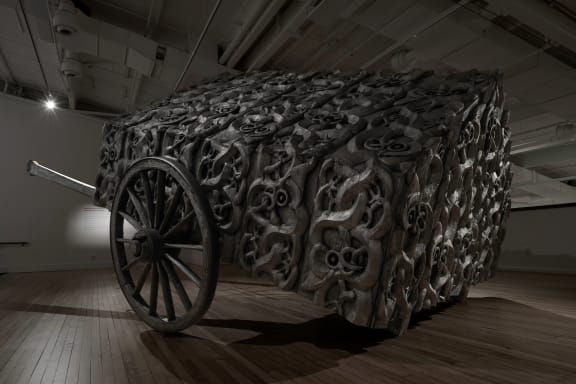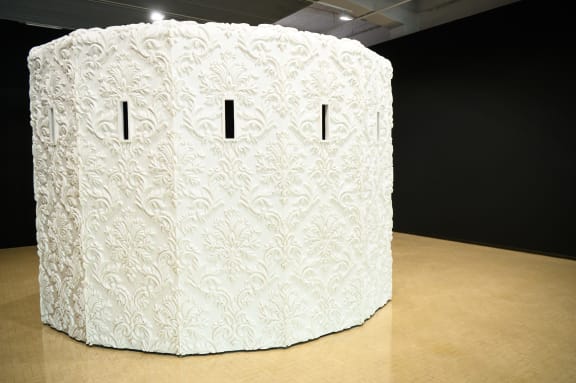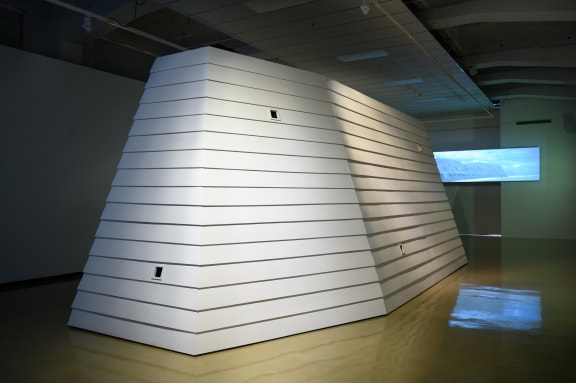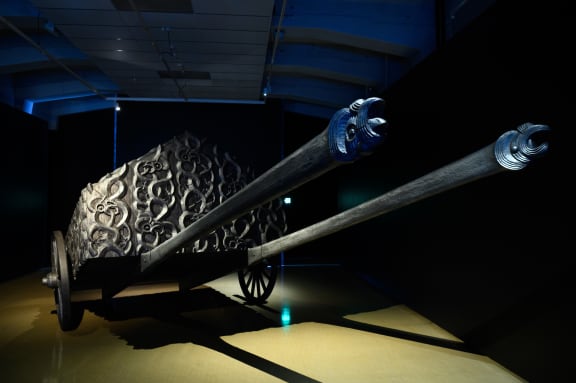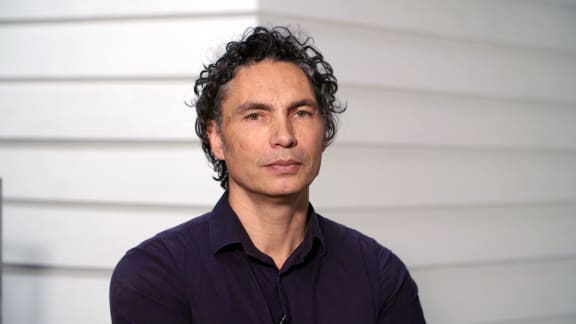Brett Graham is one of eight artists to receive an Arts Foundation of New Zealand Laureate Award this year.
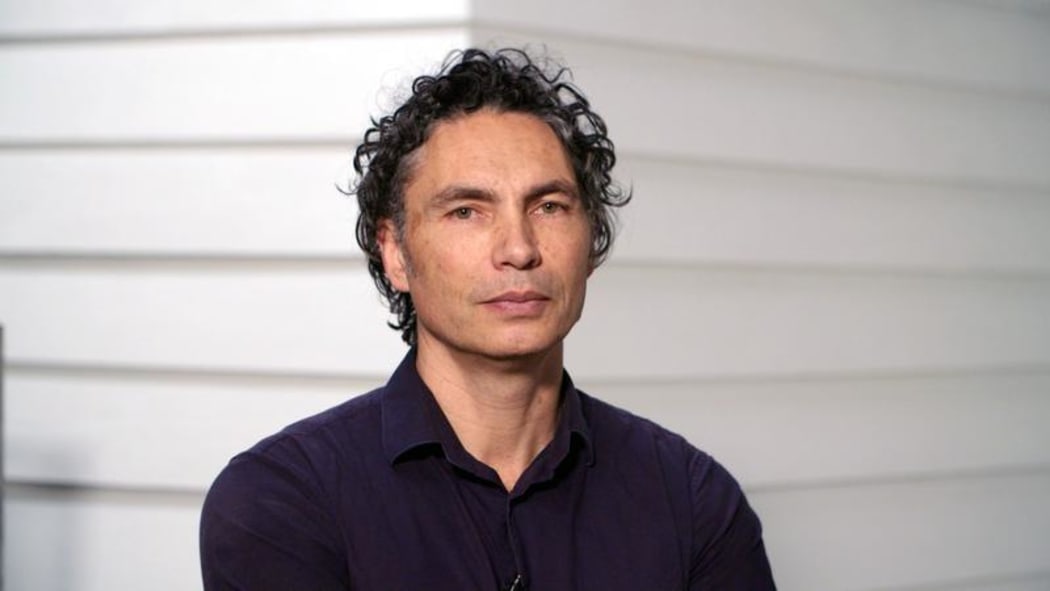
Photo: Supplied
The award celebrates New Zealand's most outstanding artists and comes with a $25,000 gift.
Graham (Ngāti Koroki Kahukura, Tainui) received the award on Friday night and his father sculptor Fred Graham is one of the Foundation's circle of only 20 Icon award winners.
Graham explores historical Māori Pākehā relations and current environmental and political issues through the language of architecture, carving, and contemporary art.
Just opened at City Gallery Wellington is Tai Moana Tai Tangata, an exhibition developed with the Govett-Brewster Art Gallery in New Plymouth which, on its debut in Taranaki was described as one of the most impressive and ambitious solo exhibitions in recent times.
With large ornately carved objects including what resemble colonial memorials, gun turrets and a pātaka on a carriage as well as moving image works, Graham interrogates the history of the Taranaki Land Wars, relating it to key issues today.
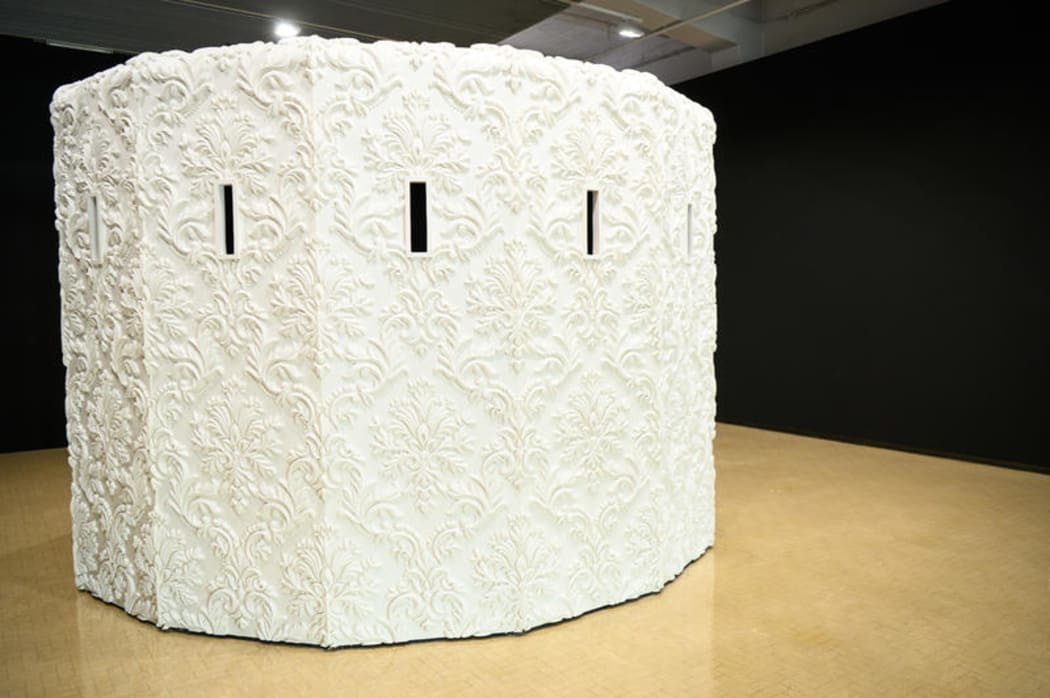
O'Pioneer by Brett Graham Photo: Mark Tantrum
In relation to the large white sculpture called 'Oh Pioneer' which has also been called 'the wedding cake' Graham said he tries to make forms that capture the spirit of an idea.
"So I was thinking about assimilation and misongynation and all the other strategies that the nation has to, in a sense unwrap and dilute Māori culture."
Graham said in making it he was conscious of policies such as assimilation and he has one Māori and one Pākehā parent.
"And statements from people like Ranginui Walker that all the race relations problems of the nation would be solved in the bedroom."
Graham said the form of the work is based on two gun turrets and it goes back to an event that took place after Te riri Pākehā or the Land Wars in Waikato.
The Pioneer was a gun boat commissioned by the New Zealand government in 1863 to go up the Waikato River, he said.
"So after the land wars and the boat had actually sunk at the Manukau Bar, they took the two turrets, the government took the two turrets and dumped one at Mercer which is very close to where I live and then another at Ngaruawahia, the King's pā where the Waipa meets the Waikato River, as a sort of a statement about who was victorious in reminding the locals that they were thoroughly defeated."
Graham said the sculpture is covered by a Victorian wallpaper.
"The message was basically that behind all the civility that we see with the British Empire lay this history of violence."
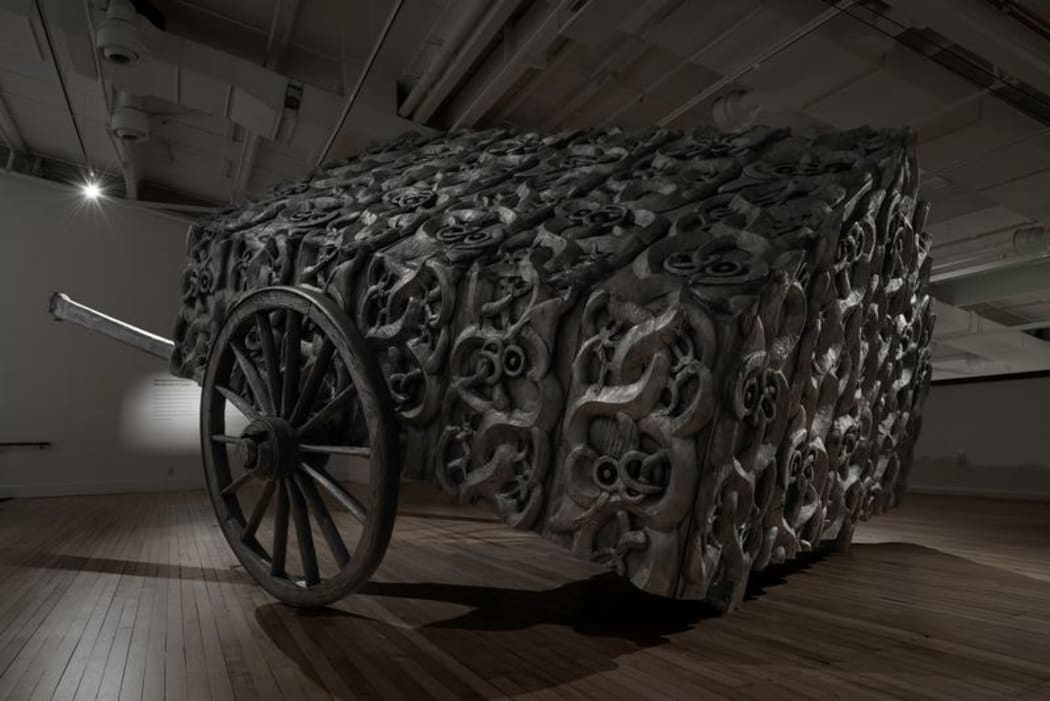
Maungārongo ki te Whenua Maungārongo ki te Tangata Photo: Neil Pardington
A piece that looks like a carriage to be drawn by a horse is called Maungārongo ki te Whenua Maungārongo ki te Tangata.
It combines the forms of a pātaka (or food storehouse) and a wagon.
Graham said it is a homage to leaders like Te Whiti o Rongomai and Tohu Kākahi, the iwi Taranaki Whānui and Riwha Tītokowaru.
He said it highlights the leaders' strategy of peace, but then when that failed being forced to resort to war in self defence.
Graham said one of the reasons he put the piece on wheels was because he was interested in the fact that when settlers encroached on the land of Te Whiti, Tohu and Tītokowaru their strategy was to send out wagons of food and water.
"So on the one hand it was a statement about manaaki or hospitality but on the other it was a reminder that they were tangata whenua and they were sending these as a gesture to remind them of whose land it was."
Graham said his art cannot be separated from history.
"The idea is to make forms, they are large because they have physical presence but they also need to occupy a space, but it's important that all of those things are entwined."
Graham said if there was no historical context he would hope those looking at the artworks could get some sense of why they were made.
